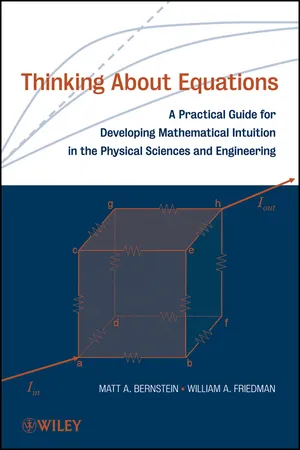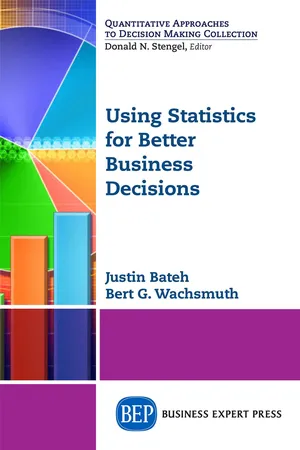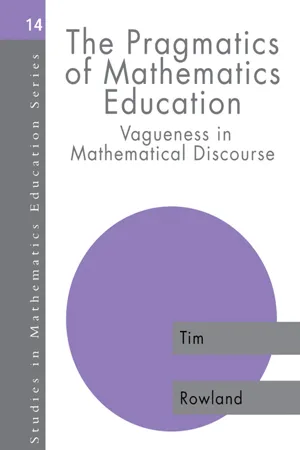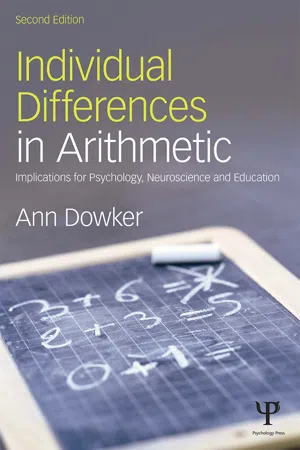Mathematics
Approximation and Estimation
Approximation and estimation in mathematics involve finding values that are close to the actual value of a quantity. Approximation typically involves simplifying a value to make calculations easier, while estimation involves making an educated guess based on available information. Both techniques are used to obtain practical and workable solutions in various mathematical problems.
Written by Perlego with AI-assistance
Related key terms
1 of 5
4 Key excerpts on "Approximation and Estimation"
- eBook - ePub
Thinking About Equations
A Practical Guide for Developing Mathematical Intuition in the Physical Sciences and Engineering
- Matt A. Bernstein, William A. Friedman(Authors)
- 2011(Publication Date)
- Wiley(Publisher)
5 ESTIMATION AND APPROXIMATIONMost problems in science and engineering can be modeled with equations, but only a few yield equations for which we can find an exact, analytic solution. In this chapter, we discuss estimation and approximation techniques that can be applied to many of the remaining problems. Even if the exact solution is attainable, an approximate solution might suffice and is usually much easier to find. The array of estimation and approximation approaches is very broad, and here we limit ourselves to a few selected methods to give a flavor for this topic.One use of the word “estimation” is to describe the process with which we make quick, mental calculations. Section 5.1 contains an example illustrating how using powers of two provides simple and accurate numerical estimates for geometric sequences (also known as geometric progressions). Another use of the word “estimation” is to describe the technique of making order-of-magnitude guesses for numerical values based on simple principles and commonsense reasoning. These techniques are illustrated with example problems in Sections 5.2 and 5.3. The study of such problems has been advocated to help remedy “innumeracy” (i.e., numerical illiteracy) or a lack of “number sense” manifested by difficulty in determining whether the order of magnitude of a numerical quantity is plausible.The remaining three sections of this chapter deal with approximation methods. Several analytic methods that can be used to approximate the value of definite integrals are discussed in Section 5.4. Basic aspects of perturbation analysis are introduced in Section 5.5. The chapter concludes with a qualitative discussion of the importance of identifying and isolating the most important variables in a problem. These ideas are illustrated by discussions of Brownian motion and the nuclear optical model. - eBook - ePub
- Justin Bateh, Bert G. Wachsmuth(Authors)
- 2015(Publication Date)
- Business Expert Press(Publisher)
Chapter 5 EstimationPreview :Estimation is an important concept to understand no matter what field you work in. Estimating outcomes may seem like a simple matter, but it is actually a complicated process. In order to create an accurate estimation, it is important to not only gather the right information but also to make the proper inferences from that data. The sample size plays a role here as well and can have a profound impact on the accuracy of the estimate: a large sample size yields better estimates than a small one. We will provide our estimates in the form of confidence intervals, which in turn come with a margin of error. If you have ever reviewed polling data for a presidential election, you know that all of those polls report a margin of error, which varies from poll to poll. Margin of error is defined as the amount allowed for miscalculation. If a poll reports that candidate A has the support of 52 percent of the population while candidate B enjoys the support of 48 percent of the people and the margin of error is 3 percent, candidate A could have the support of between 49 percent and 55 percent of the people surveyed, while support for candidate B could be between 45 percent and 51 percent. These deviations may be small, but they can mean the difference between one candidate and the other prevailing on election day. We will provide estimates for the population mean, the difference of population means, and for proportions.Learning Objectives : At the conclusion of this chapter, you should be able to:- Construct and interpret confidence interval estimates for the mean and the proportion
- Determine the sample size necessary to develop a confidence interval estimate for the mean or proportion
- Use confidence interval estimates in solving business problems
Up to now we discussed descriptive statistics (Chapters 1 to 3 ) and we developed some basic understanding of probability theory (Chapter 4 ). Beginning with this chapter we will talk about inferential statistics, which will be based on the theory we developed in Chapter 4 - eBook - ePub
The Pragmatics of Mathematics Education
Vagueness and Mathematical Discourse
- Tim Rowland(Author)
- 2003(Publication Date)
- Routledge(Publisher)
estimation of the number of objects in a set. This choice of focus is partly for the sake of addressing what is perhaps the most obvious aspect of mathematical activity in which one would expect vague language to play a part. Moreover, it is possible in a short (5–10 minute) interview to present appropriate estimation tasks to children in a meaningful way, to obtain responses, and to follow these up from a restricted menu of probes. It is therefore convenient, in designing an age-related study, to use estimation rather than generalization tasks to elicit vague language when dealing with a pupil sample numbered in hundreds rather than tens.Estimation
Clayton (1992, p. 11) classifies the diffuse notion of estimation into three broad categories.Computational estimation involves the determination of approximate (typically, mental) answers to arithmetic calculations, e.g. 97π is roughly 100×3. 1 or 310. Such competence is commended by the National Curriculum for Mathematics in England and Wales (DFE, 1995, p. 25) for the purpose of checking answers to precise calculations for their ‘reasonableness’; pupils, however, seem to regard such checks as trivial or pointless (Clayton, 1992, p. 163).Quantitative estimation indicates the magnitude of some continuous physical measure such as the weight of a book, the length of a stick.Numerical estimation entails a judgement of ‘numerosity’—the number of objects in a collection. In principle, such a set could be precisely quantified by counting. In practice such precise enumeration may be impracticable or simply judged to be unnecessary, excess to pragmatic requirements.Ellis (1968, p. 159) observes that counting may be considered to be a measuring procedure, unique in the non-arbitrariness of the unit of measure. In fact, Clayton merges numerical estimation and quantitative estimation into one analytical category. Sowder (1992) notes that ‘there simply is not a rich research base in estimation’ and that most such research has been on computational estimation. Moreover, ‘Numerosity estimation has received the least research attention, and […] the only two studies located combine it with measurement estimation’ (p. 372). One those two studies was reported in a short article—by Clayton himself—in Mathematics Teaching - eBook - ePub
Individual Differences in Arithmetic
Implications for Psychology, Neuroscience and Education
- Ann Dowker(Author)
- 2019(Publication Date)
- Routledge(Publisher)
This chapter will review some studies of arithmetical estimation and discuss some of the possible reasons for the individual differences that have been found. In particular, it will look at the extent to which estimation is related to certain other arithmetical tasks. First, however, we must emphasize that estimation itself is not a single unitary process but is made up of numerous components. In comparing and attempting to integrate different studies, it is important to remember that different aspects of estimation are emphasized in different studies: in particular, educational studies tend to emphasize aspects related to mental calculation, while brain studies tend to emphasize approximation.What is arithmetical estimation?
Arithmetical estimation is not a single process. There are many processes that contribute to or could be described as arithmetical estimation. Consider the following examples:- In a study by Starkey (1992; see Chapter 4 of this book), children as young as 2 were encouraged to put a number of balls into an opaque box. An adult then either added or subtracted balls from the original quantity. The children were then asked to take the balls out of the box one at a time. The number of times they reached into the box was used to indicate their expectation of the resulting quantity. When small numbers were involved, most 2-year-olds made an ordinally appropriate number of retrieval attempts: fewer than the original quantity if items had been subtracted, and more than the original quantity if items had been added.
- 4-year-old Jack counted a set of eight counters. Another counter was then added, and Jack was asked how many there were now. He guessed, “6”. Paul, also 4, was passing by and commented, “No, it’s got to be more!”
- 5-year-old Michelle was asked to guess the answers to some single-digit addition problems. She consistently added 1 to the larger addend each time: 3 + 4 = 5, 2 + 6 = 7 and 8 + 2 = 9.
- 6-year-old Chloe could calculate or remember the answers to addition problems that added up to 10 or less. For larger sums, adding up between 10 and 25, she did not calculate but quickly guessed answers that were usually near to the correct answer: 8 + 6 = 12 and 12 + 13 = 21. When she was given still larger sums, her answers were more erratic; when invited to give the answers to three-digit addition sums, she alternated between replying “A British billion” and “A quadrillion”.
Index pages curate the most relevant extracts from our library of academic textbooks. They’ve been created using an in-house natural language model (NLM), each adding context and meaning to key research topics.



